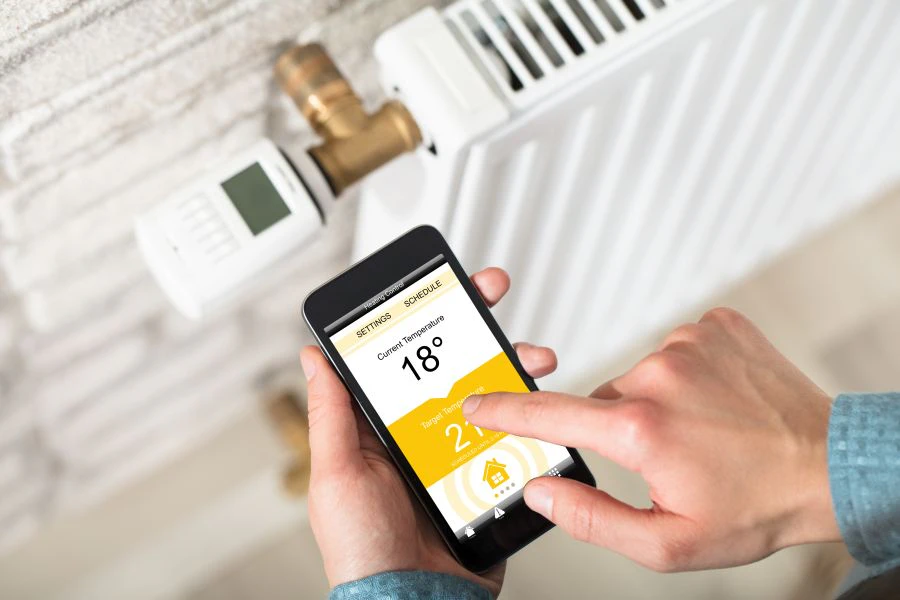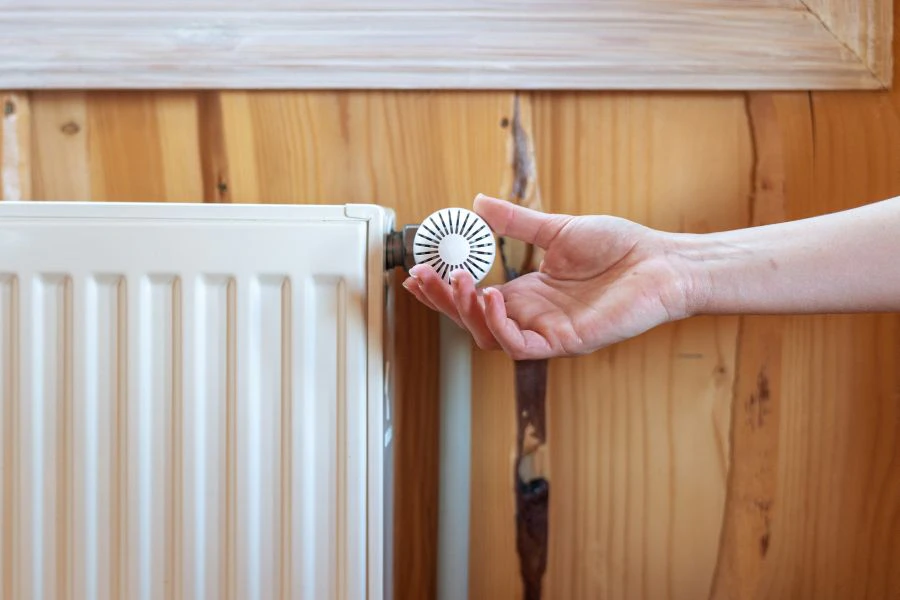
Home automation
Get into good habits!
Whether you feel the cold very easily or not, you have necessarily turned on your heating in winter, to varying degrees: it is to be warm in the living room, not to shiver when you get out of the shower in the bathroom, to cook comfortably in the kitchen and to be able to sleep in good conditions in the bedroom. Inevitably, this search for pleasant and comforting warmth increases the bill for electricity, gas, fuel oil ... A necessary evil? Not necessarily: by adopting good reflexes and implementing some improvements, you can heat better, and save money in the process.

Find the ideal temperature for each room
A degree more or a degree less in a room, over time, can mean higher heating expenses! Overheating a room is also not the best way to be comfortable. This is why it is interesting to look at the ideal temperature one should get. On average, the Construction and Housing Code estimates that 19 ° C is the temperature to aim for a living room, kitchen or dining room. For the bedroom, the ideal temperature is between 16 ° C and 17 ° C maximum, even if it is possible to increase it a little in a newborn baby’s bedroom... but not too much!
In areas such as toilets, a hallway or an entrance, again 17 ° C is an acceptable average. And when we talk about rooms that are rarely visited, such as a laundry room, the temperature can be set at 14 ° C or even 12 ° C. The only real exception is the bathroom where a temperature between 19 ° C and 22 ° C is recommended. Be aware that one more degree can quickly increase the bill: going from 19 to 20 ° C represents for example 7% of additional expenditure. Sometimes you can just put on a sweater!
The art of positioning radiators
For a really efficient heating, it is advisable to place the radiators strategically. If you want to install new radiators, one of the rules to follow is to place them in areas where thermal variations can be significant, such as under windows or against a wall facing outwards. Heating from these places compensates for temperature variations between the interior and the exterior. And if the house or apartment is poorly insulated, it is possible to position, behind the radiator, heat reflectors: these consist of an insulator covered with aluminum which limits the heat loss, and not only makes it possible to heat better, but also to save energy.
A radiator fixed to the wall must also take advantage, at least of 15 cm of vacuum on each side, of a space of 50 cm above and be fixed to 10 or 15 cm from the floor. And for optimal heat distribution, also avoid placing bulky objects nearby: a simple curtain can have a negative effect on the heating of a room.


Programming your radiators, an effective solution
A very effective solution to optimize the heating of your home is to opt for a system allowing to program the duration of operation of the radiators, as well as, in certain cases, to select precisely the desired temperature. To do this, you can install a thermostat in your home, opt for radiators that incorporate a timer or, even more modern, have a Wi-Fi connected system that can be controlled remotely. For example, the home automation set from Thomson offers in particular connected modules allowing you to configure the temperature of your home, by connecting to the boiler or directly to electric heaters. If you use auxiliary heaters that plug into the mains, opting for a Plug-I connected socket can allow you to schedule the switching on or off of a device at a specific time.
The main objective of this solution is not to heat your home, or certain rooms, when you are not there. With the optimized settings, you can turn the heater back on at a specific time so that the temperature is optimal when you get home. This also applies room by room: if you leave your room at 8 a.m. and don't go to bed before 10:30 p.m., why heat the room all day? Here you can also make the necessary adjustments. In addition, thanks to the application, you will be able to adjust the heating while away from home, for example when returning from weekends or if your child returns early from school.
Obviously, to bet on the programming of the heating of your interior requires a financial investment. But since raising the temperature a few degrees can dramatically increase your bill, lowering the temperature can save you money. The installation is therefore quickly amortized.
The right radiator for optimal comfort
Saving money is one thing, but don't neglect comfort! If you choose electric heaters, be aware that there are many kinds. Fan heater, radiant, a radiator with dry inertia, not everyone the same use, and the same energy consumption. The Thomson catalog offers a very wide choice of models, all you have to do is choose the ones that suit your use!
The fan heater:is a generally portable model, perfect for quick heating a small room, like a bathroom, for example. However, it is especially designed for short-term use, because it generally consumes a lot of electricity: do not let it run all day! For more frequent use, the radiant radiator is an interesting choice. It operates using an electrical resistor, which heats a large aluminum, metal or glass panel. Heat is then emitted by infrared radiation, like the sun! Its use is recommended in medium rooms, because the heat remains very localized near the radiator.
Finally, we can turn to inertial radiators: it can be dry or fluid depending on the model.
In the case of a radiator with dry inertia, the resistors are integrated into a solid heating core, composed of metal plates. The rise in temperature is a little longer than that of a model with fluid inertia, but the heat is restored longer when you turn off the radiator, which is a real plus. This type of model is suitable for rooms such as a living room or a kitchen.
In the case of a fluid inertia radiator, a liquid helps to store and distribute the heat produced by immersion heaters, namely immersed electrical resistors. The heat thus proposed is gentle and very constant, with relatively rapid heating. This is the type of model to favor for a bedroom.
Improving the heating of your home is therefore not only a question of economy: it is also a question of choosing the radiator models and optimizing their installation. You now have all necessary information to make the right choices!


 Denmark (Danish)
Denmark (Danish)  Deutschland (Deutsch)
Deutschland (Deutsch)  España (Español)
España (Español)  France (Français)
France (Français)  Italia (Italiano)
Italia (Italiano)  Nederlands (Dutch)
Nederlands (Dutch)  Polska (Polski)
Polska (Polski)  Russia (Russian)
Russia (Russian)  Sweden (Swedish)
Sweden (Swedish)  Turkey (Turkish)
Turkey (Turkish)  Ukraine (English)
Ukraine (English)  United Kingdom (English)
United Kingdom (English)  USA (English)
USA (English)  China (Chinese)
China (Chinese)  Hong Kong (English)
Hong Kong (English)  India (English)
India (English)  Indonesia (English)
Indonesia (English)  Lebanon (English)
Lebanon (English)  Saudi Arabia (English)
Saudi Arabia (English)  Thailand (English)
Thailand (English)  Vietnam (English)
Vietnam (English)  Algeria (Français)
Algeria (Français)  Egypt (English)
Egypt (English)  Australia (English)
Australia (English)